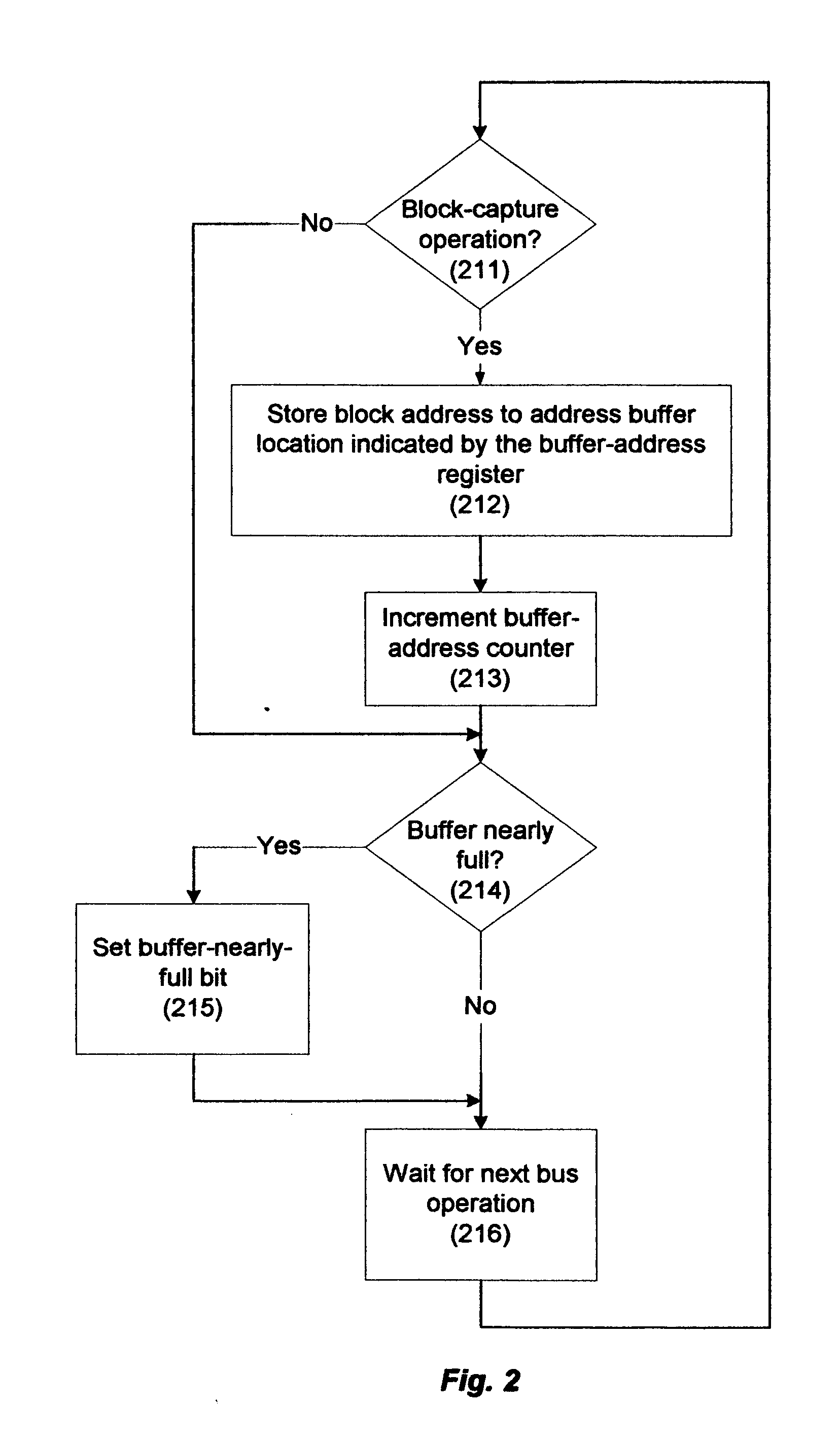Memory-controller-embedded apparatus and procedure for achieving system-directed checkpointing without operating-system kernel support
a memory controller and operating system technology, applied in the field of apparatus and techniques for achieving fault tolerance in computer systems, can solve the problems of virtually impossible for such systems to remain competitive in an era of rapidly advancing state-of-the-art commodity computers, and specialized plug-in hardware components
- Summary
- Abstract
- Description
- Claims
- Application Information
AI Technical Summary
Benefits of technology
Problems solved by technology
Method used
Image
Examples
first embodiment
[0046] In accordance with the flowchart in FIG. 2, the memory controller, in addition to its normal functions, monitors the processor and I / O buses for “block-capture” operations. In this first embodiment of the invention, these block-capture operations are simply write operations to main memory initiated by any processor or I / O device. When a write operation is detected (211), the memory controller appends the associated block address onto the buffer at the location indicated by the buffer address register (212). It then increments the buffer address counter (213) and checks to determine if the buffer is reaching capacity (214). If it is, it sets the “buffer-nearly-full” status bit (215). It then suspends this activity and waits for the next bus operation (216).
[0047] When it is time to establish a checkpoint, the computer's processors rendezvous in the usual manner; each processor flushes its internal state and the contents of all its modified cache lines out to main memory. When ...
second embodiment
[0051] In the invention, the definition of “block-capture operation” is expanded to include, in addition to write operations, any operation that indicates the possibility of a deferred write to main memory, e.g., in the case of the MESI cache-coherency protocol, read with exclusive ownership or read with intent to modify and cache-line invalidate operations. With this change in definition and with the proviso that all data must be recognized as shared data, both the normal-mode operation shown in FIG. 2 and the checkpoint-mode operation shown in FIG. 3 proceed exactly as just described. While the copying operation previously did not depend on bus snooping, however, copying in this case is preferably done with bus snooping enabled. If this is done, the processors can omit the cache-flushing operation following the checkpoint rendezvous and instead rely on the cache coherency protocol to guarantee that the most recently modified blocks are copied. Consequently, the processors, after s...
PUM
 Login to View More
Login to View More Abstract
Description
Claims
Application Information
 Login to View More
Login to View More - R&D
- Intellectual Property
- Life Sciences
- Materials
- Tech Scout
- Unparalleled Data Quality
- Higher Quality Content
- 60% Fewer Hallucinations
Browse by: Latest US Patents, China's latest patents, Technical Efficacy Thesaurus, Application Domain, Technology Topic, Popular Technical Reports.
© 2025 PatSnap. All rights reserved.Legal|Privacy policy|Modern Slavery Act Transparency Statement|Sitemap|About US| Contact US: help@patsnap.com



